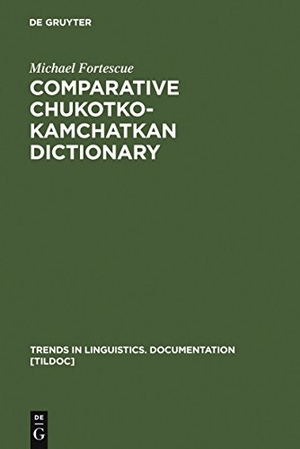Für statistische Zwecke und um bestmögliche Funktionalität zu bieten, speichert diese Website Cookies auf Ihrem Gerät. Das Speichern von Cookies kann in den Browser-Einstellungen deaktiviert werden. Wenn Sie die Website weiter nutzen, stimmen Sie der Verwendung von Cookies zu.
Cookie akzeptieren
Michael Fortescue
Comparative Chukotko-Kamchatkan Dictionary
- De Gruyter Mouton
- 2005
- Gebunden
- 508 Seiten
- ISBN 9783110184174
This volume is the first comprehensive comparative dictionary to cover the whole of the Chukotko-Kamchatkan family. The genealogical status of this family (whether from a common source or due to convergence) has long been controversial, but its coherence as a family can now be taken as proven. Its geographical position between Siberia and northernmost America renders it crucial in any attempt to relate the languages and peoples of these large linguistic regions. The dictionary consists of cognate sets arranged alphabetically according to reconstructed proto-forms and covers all published lexical sources for the languages concerned (plus a good deal of unpublished material). The criterion for setting up
Mehr
Weniger
zzgl. Versand
in Kürze